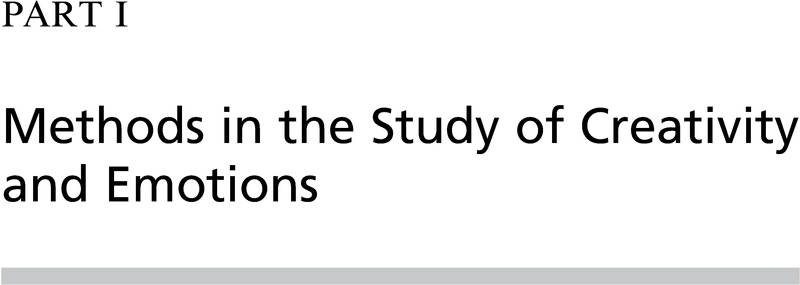Book contents
- The Cambridge Handbook of Creativity and Emotions
- Cambridge Handbooks in Psychology
- The Cambridge Handbook of Creativity and Emotions
- Copyright page
- Dedications
- Contents
- Figures
- Tables
- Contributors
- Acknowledgments
- Creativity and Emotions
- Part I Methods in the Study of Creativity and Emotions
- Part II The Development of Creativity
- Part III Emotions and the Creative Person
- Part IV Emotions and Creative Products
- Part V Emotions and Creativity at School and Work
- Index
- References
Part I - Methods in the Study of Creativity and Emotions
Published online by Cambridge University Press: 16 February 2023
- The Cambridge Handbook of Creativity and Emotions
- Cambridge Handbooks in Psychology
- The Cambridge Handbook of Creativity and Emotions
- Copyright page
- Dedications
- Contents
- Figures
- Tables
- Contributors
- Acknowledgments
- Creativity and Emotions
- Part I Methods in the Study of Creativity and Emotions
- Part II The Development of Creativity
- Part III Emotions and the Creative Person
- Part IV Emotions and Creative Products
- Part V Emotions and Creativity at School and Work
- Index
- References
Summary

- Type
- Chapter
- Information
- The Cambridge Handbook of Creativity and Emotions , pp. 9 - 84Publisher: Cambridge University PressPrint publication year: 2023

